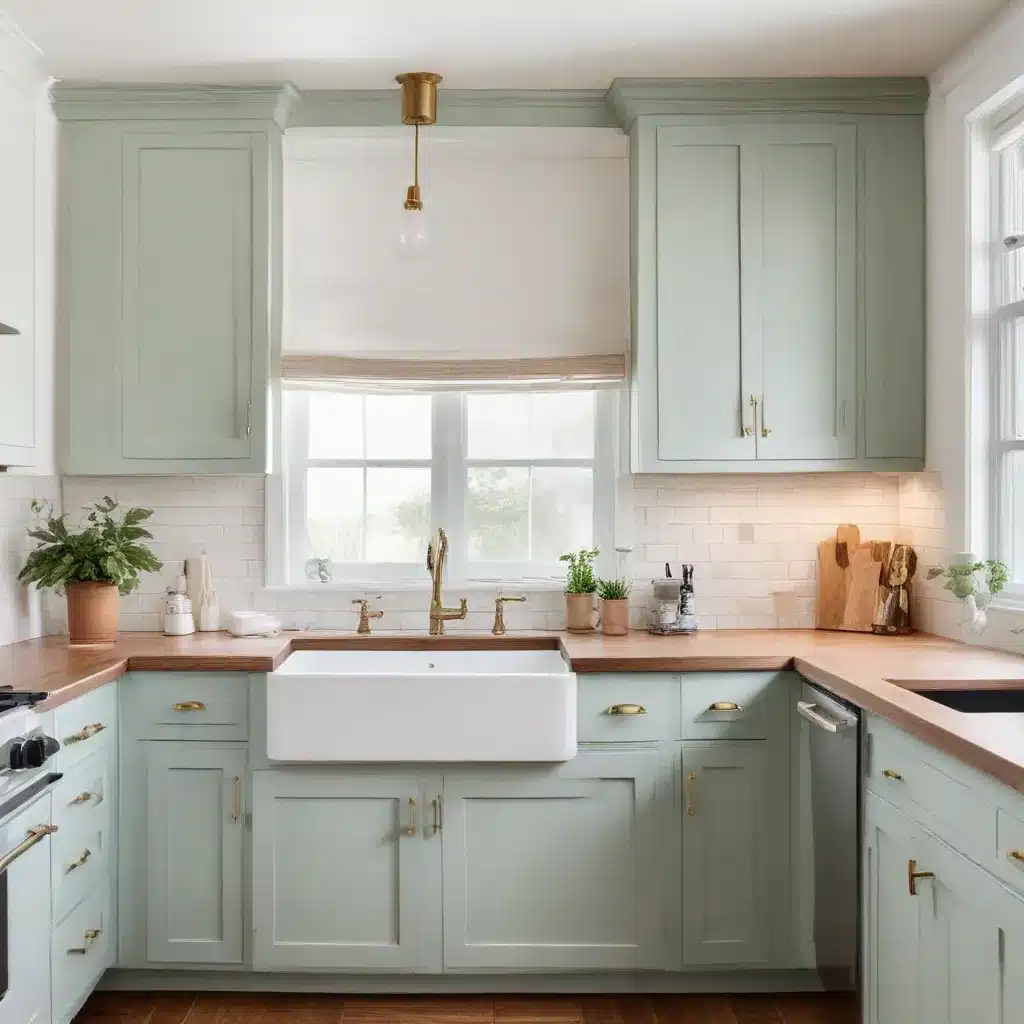When embarking on a home renovation project, many homeowners grapple with the decision of whether to take on certain tasks themselves or hire professional contractors. Finding the right balance between DIY and professional expertise can be critical to achieving a successful and satisfying outcome. By strategically integrating these two approaches, you can create a seamless remodeling process that maximizes cost savings, ensures quality craftsmanship, and delivers a final result that meets your unique needs and aesthetic preferences.
Benefits of Blending DIY and Professional Efforts
The advantages of blending DIY and professional work often extend beyond just the bottom line. While DIY projects can provide a sense of accomplishment and allow for greater customization, hiring skilled tradespeople can elevate the overall quality and functionality of your renovation. When you strike the right balance, you can capitalize on the strengths of both approaches.
One of the primary benefits of incorporating professional remodeling services is access to specialized knowledge and experience. Seasoned contractors possess a deep understanding of building codes, construction techniques, and the latest industry trends and technologies. They can provide valuable guidance on material selection, layout optimization, and the integration of eco-friendly solutions – all of which can contribute to a more polished and durable final product.
Conversely, DIY projects can enable you to personalize your space in ways that align with your unique preferences and lifestyle needs. By tackling certain tasks yourself, you can infuse your renovation with a level of creativity and attention to detail that may be difficult to achieve through a purely professional approach. This can be particularly advantageous when it comes to family-friendly designs, where incorporating personal touches can make a space truly feel like a home.
Balancing DIY and Professional Expertise
Striking the right balance between DIY and professional work requires careful planning and consideration of your specific project goals, budget, and skill level. Start by clearly defining the scope of your renovation and identifying the areas where professional expertise is essential, such as structural modifications, plumbing, or electrical work.
Once you’ve determined the must-have professional services, assess your own capabilities and comfort level with tackling various DIY tasks. Hands-on projects like painting, trim work, or installing flooring may be well within your skillset, allowing you to save on labor costs while still maintaining quality control.
It’s important to be honest with yourself about your DIY limitations and not bite off more than you can chew. Overestimating your abilities can lead to costly mistakes, delays, and potentially unsafe conditions. By identifying your DIY sweet spot and enlisting professional help for the more complex or specialized aspects of the project, you can create a harmonious balance that maximizes efficiency and ensures a successful outcome.
Seamless Transitions Between DIY and Pro Work
Seamlessly transitioning between DIY and professional work requires meticulous planning and coordination. Begin by developing a comprehensive project timeline that outlines the sequence of tasks and the anticipated involvement of both DIY and professional efforts.
Effective communication with your remodeling contractor is crucial. Clearly articulate your DIY plans and timelines, and work collaboratively to ensure a smooth interface between the two. This may involve tasks like pre-painting walls before the installation of new cabinetry or coordinating the delivery of materials to align with your personal availability.
Another important consideration is maintaining consistent quality standards throughout the renovation. Establish clear expectations with your contractor regarding the finishes, material specifications, and aesthetic details that you’ve identified for your DIY components. This will help ensure a cohesive visual integration and prevent any jarring transitions between the professionally executed and DIY-completed elements of your project.
By carefully planning, communicating, and aligning your DIY and professional work, you can create a seamless remodeling experience that capitalizes on the strengths of both approaches. The result will be a beautifully transformed space that truly reflects your personal style and functional needs.
Remodeling Project Planning
Successful home renovations often hinge on meticulous planning and foresight. Before embarking on your project, take the time to establish your overall goals, evaluate budgetary constraints, and develop a realistic timeline.
Establishing Project Goals and Scope
Begin by clearly defining the primary objectives of your remodel. Are you seeking to enhance functionality, improve energy efficiency, or simply refresh the aesthetic of a specific room or area? Identifying your priorities will help guide the decision-making process and shape the scope of your project.
Next, carefully assess the existing conditions of your home and thoroughly evaluate the necessary renovations or modifications. This may involve consulting with professionals, such as structural engineers or building inspectors, to ensure the feasibility and safety of your proposed changes.
Budgeting and Cost Considerations
Creating a comprehensive budget is a critical step in any remodeling endeavor. Start by researching the average costs for the materials, labor, and permits required for your specific project. Be sure to account for unexpected expenses, such as hidden structural issues or code-compliance upgrades.
Carefully weigh the potential savings of DIY work against the potential risks and time investment. In some cases, the cost of materials and tools may outweigh the labor savings, making a professional contractor the more economical choice. Conversely, tackling certain tasks yourself can lead to substantial cost savings that contribute to your overall project budget.
Timeline and Scheduling Coordination
Developing a realistic timeline is essential for managing expectations and ensuring a smooth remodeling process. Begin by mapping out the sequence of tasks, factoring in lead times for material deliveries and the availability of your contractor or subcontractors.
When integrating DIY and professional work, be mindful of interdependencies and potential bottlenecks. Coordinate closely with your contractor to align your personal availability and DIY schedules with the professional team’s workflow. This will help minimize disruptions and ensure that each phase of the project flows seamlessly into the next.
DIY Remodeling Techniques
For homeowners with a willingness to roll up their sleeves and get their hands dirty, DIY projects can be a rewarding and cost-effective way to contribute to the transformation of your living space. By developing essential hands-on skills, you can tackle a wide range of tasks and infuse your renovation with a personalized touch.
Hands-on Skills Development
Before diving into your DIY projects, consider taking the time to develop or refine your construction, carpentry, and finishing skills. This can involve enrolling in local workshops, watching online tutorials, or simply practicing on smaller projects to build confidence and expertise.
Mastering techniques like measuring and cutting, installing trim and molding, or applying paint and stain can be valuable assets that allow you to tackle a wider range of DIY tasks with precision and quality.
Tackling Specific DIY Tasks
Based on your skill level and the scope of your renovation, identify the specific DIY projects that align with your capabilities and comfort level. Painting, tiling, installing flooring, and building custom shelving are just a few examples of tasks that can be well-suited for the DIY approach.
When undertaking DIY work, be sure to prioritize safety and quality standards. Follow manufacturer instructions, use the appropriate tools and equipment, and maintain a clean and organized workspace to minimize the risk of accidents or subpar results.
Ensuring DIY Quality and Safety
While the DIY path can lead to significant cost savings, it’s crucial to maintain a high level of quality and adhere to all relevant building codes and regulations. Regularly inspect your work, and don’t be afraid to seek professional guidance if you encounter any challenges or uncertainties.
Remember, the goal of integrating DIY and professional work is to create a seamless and harmonious renovation. By ensuring that your DIY efforts meet the same standards as the professionally executed components, you can achieve a cohesive and visually appealing final result.
Professional Remodeling Services
In addition to the DIY elements of your project, strategically incorporating professional remodeling services can elevate the overall quality, functionality, and long-term value of your home.
Identifying Necessary Professional Work
Evaluate the scope of your renovation and determine the areas that require the expertise of licensed and experienced tradespeople. Structural modifications, electrical work, plumbing, and HVAC systems are often best left to professional contractors to ensure compliance with safety standards and building codes.
Additionally, consider engaging professional services for tasks that may be outside of your DIY comfort zone, such as custom cabinetry, tile installation, or complex finish carpentry. Leveraging the skills of trained specialists can help mitigate the risk of costly mistakes and deliver a polished, high-quality result.
Vetting and Hiring Qualified Contractors
When selecting professional contractors, take the time to thoroughly vet their qualifications, licensing, and insurance coverage. Request references, check online reviews, and ensure that they have a proven track record of delivering successful remodeling projects similar to your own.
During the hiring process, clearly communicate your project goals, timeline, and budget, and establish a clear scope of work and payment schedule. This will help set expectations and ensure a seamless collaboration between you and your remodeling team.
Coordinating Professional Remodeling Efforts
Effective communication and coordination between you, your DIY projects, and your professional contractors are crucial for a successful remodel. Maintain a detailed project plan that outlines the sequence of tasks, material deliveries, and the anticipated involvement of each team member.
Regular check-ins and progress updates with your contractors will help ensure that any interdependencies between the DIY and professional work are properly identified and addressed. This collaborative approach will help minimize disruptions, maintain quality control, and keep your renovation on track.
By strategically integrating DIY and professional remodeling services, you can create a transformative home renovation that reflects your unique style, meets your functional needs, and delivers long-lasting value. Remember, the key to success lies in careful planning, clear communication, and a willingness to embrace the strengths of both approaches. With this mindset, your remodeling journey is sure to be a rewarding and seamless experience.




